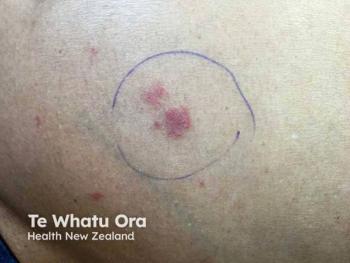
Optimizing the Treatment of Atopic Dermatitis
Andrew Blauvelt, MD, MBA, shares clinical pearls for the management of atopic dermatitis with systemic therapy.
Episodes in this series

Andrew Blauvelt, MD, MBA: Going forward in your private practices, I encourage you to consider using systemic therapy for your patients with atopic dermatitis more often than topical therapy. What are the guidelines for using systemic therapy vs topicals? Basically, it’s failure of topical therapy. Sometimes it’s very obvious if you have a very severe patient who’s suffering widespread disease. Then you should immediately be thinking that this patient is not going to do well with widespread use of triamcinolone. With this patient, from the get-go, you’re going to want to be thinking about systemic therapies.
For patients who have been on multiple courses of prednisone, that’s another big red flag for your private practice. If you’re commonly using prednisone—let’s say 3 times a year for a given patient—to me, that’s not good for the patient. The patient is going to get better and then get worse. It’s not addressing the disease long term, and there are particular adverse effects and problems with 2 weeks of prednisone use, so I don’t like that practice, especially now that we have a number of terrific drugs to go to for systemic therapy.
The first 1, and the 1 we know the best, is dupilumab. Dupilumab is safe. It’s effective. It’s been out for many years. If you’re not using it, then you should be using it; it’s a terrific drug. We’re having a number of other great treatment options for these patients, so don’t be shy; use these new drugs. They work terrifically. Most important, they change patients’ lives. They really help patients and caregivers. For example, for a teenage patient or a pediatric patient, think about what’s happening in that patient’s life. Think about the effect of the disease on their life. That should logically lead you to using more systemic therapy to have a more positive impact in their life.
Transcript Edited for Clarity
Newsletter
Like what you’re reading? Subscribe to Dermatology Times for weekly updates on therapies, innovations, and real-world practice tips.




















